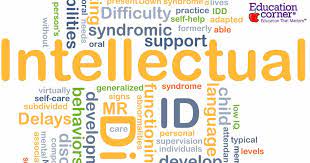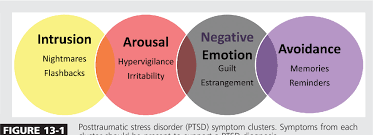Want help to write your Essay or Assignments? Click here
Child Development Theory and Practices
Introduction
Childhood development is the theory and practice of procedures to ensure that the child is given the proper resources, guidance and nutrition to see them through their infancy up to middle school. Child development can also be the biological, social and psychological change in a child as they grow. However, it is supported by the various efforts and developmental models chosen and taken by their parents and guardians. Indeed, the development of a child involves aspects such as pedagogical development and the development of the various biological systems in the body.
The whole process is geared towards achieving total autonomy in the child. Children are exposed to many issues at an infant age. The most challenging of these issues is the introduction of new diet. Children often have to begin feeding on supplementary diet that is different from mammary milk after they attain the age of twelve months. Child development policies and strategies ensure that these steps and stages in the development of the child are done incrementally and professionally to achieve desired impact (Bevans, Riley & Forrest, 2010).
Background on child development
Child development has been a source of scientific and medical research over the last few decades. Policies in child development often relate to the ability of the parent to help them achieve autonomy. However, with regard to theories in child development, the concern has often been about the emotional and physical relationship of the child and the mother. Many studies have been done on issues in child development. They have since resulted in aspects of child treatment, immunization and even nutrition.
The most significant theories in child development are the Developmental theories and the attachment theories (Warner, 2007). It is necessary however to realize that although most of the theories on child development have hardly been refuted, they have not been unanimously approved as well. Child development is often the cause of controversy in many policy development forums. There are particular goals that need to be achieved in child development but many different approaches to achieve these theories.
Where child development in a biological context is concerned, the physical change in the body of a child as they move from childhood to puberty is often a marvel in scientific research. Many children often realize a particular affinity for certain objects, games and pleasantries as they grow. However, there is likely that a child’s growth potential is achieved by the time they reach puberty (Bevans, Riley & Forrest, 2010). Children however do not easily learn the psychomotor skills on their own.
The exposure the child gets as they grow often determines how well they grow with regard to psychological and emotional development. There is indeed a direct relationship between the child’s environment and their eventual personality traits. More so, the adaptability of the child at the infancy stage is higher than at any other stages in their development. This is why child development theory and practice takes center stage among many pediatric research and education practices (Capel, 2012).
Child development however exceeds past growth. For instance, when a child grows, organs do not just grow, they are specialized. The same is the case for the various body cells and senses. They become bigger (grow) and better at their functions (develop). Child development theories thus take all these issues into account. However, with regard to the aspects and determining factors in child development; it is often the case that cases of child development complications are often treatable.
Medical research asserts that since the mind of the child keeps changing and growing, it is often the case that children may outgrow behavioral and psychological issues. There is however contention on the possibility of child brain research towards the treatment of regressive growth involving limbs and other bodily organs with a rich nervous system (O’Connor & McCartney, 2007).
Child Development Theories
Child development theories assess the growth and development of the child; the mitigating factors and the various aspects of the growth. Theories try and explain why phenomena such as development of limbs, ability to walk, talk and read as well as the growth of the intuition in a child occurs as it does. The major categories children are classified into often include; newborns, infants, toddlers, preschoolers, school-aged children and adolescents. These different categories of children often exhibit different traits.
This is why models are often specific to the category and explain how growth takes place from one category to the next. There are various theories formulated towards contributing to child development policies. However, this paper will discuss two main theories; child development theories and child attachment theories. These theories help scientists assess various growth factors and inhibitors to proper development of the child (Rigby, 2007).
Child development theories assess and explain the factors behind a child’s development. The most common of these theories is the ecological systems theory. The ecological systems theory was first proposed by Urie Bronfenbrenner. He proposed four categories for child biological development. These include; microsystem, mesosystem, exosystem and macrosystem. The microsystem of the child is the nervous and cardio vascular system. The mesosystem defines the muscular system in the body.
The exosystem defines the skin organ of the body and all systems that interact with the external environment while the macrosystem defines the organ system in the body. A child’s development is expected to take place simultaneously in all these four stages. The theory also proposes that each of these subsystems contains particular norms and principles that guarantee development in a symbiotic manner. The relationship between the systems defines how well or retarded growth in a child is.
The child attachment theory defines the psychological, evolutionary and ethological development of a child. The theory asserts that interpersonal relationships between human beings are based on the development and proliferation of psychological needs. These needs stem from the child’s emotional upbringing and contact with the environment they live in. It is thus a concern that needs to be addressed by care givers.
The child’s evolutionary needs have to do with the child’s nutrition and socialization. Aspects such as early schooling, introduction to sporting activities and involvement in household chores contribute greatly to child development. It is thus critical to achieve these early. However, ethological (behavioral) growth in a child is cultured from the observations the children make on their own. This is why the environment one raises a child in must be protected from unnecessary exposure.
Want help to write your Essay or Assignments? Click here
Early Childhood Education Theories
Early childhood education theories discuss the development of the child as they progress through school from introduction to later stages in school. For instance; the Development Integration Approach in child development discusses child development on aspects such as; physical, social, emotional, language and cognitive skills. Physical development is assessed through measures such as the body mass index (BMI) that evaluates the mass against the height of the child. Social and emotional development skills are the skills the child acquires from interacting with other children and adults.
Language can be considered in two aspects; the first language the child was exposed to; known as L1 and the other languages follow as L2, L3…However, language can also be the ability of the child to learn etiquette, euphemism and other necessary language skills at an early age. Cognition in a child is the most observable change. Abilities such as reading, learning and concentrating however take time to develop in a child. The ability to use language properly is very important to the child’s growth as it makes them able to communicate (Warner, 2007).
The other common theory in early childhood education is the socio-cultural learning theory. This theory asserts that the impact of the child’s social experiences as well as their cultural disposition affects their individual thinking and the development of their mental processes. This is why it is important to raise children in environments that elicit such growth potential.
All the same, whatever environment the child finds themselves in is able to affect their mental and psychological health either positively or negatively. The theory by Lev Vygotsky proposes that cognition should be trained by the child’s care givers since it occurs on a social context. Allowing children to play and undertake certain responsibilities early prepares them for such responsibilities in the future (O’Connor & McCartney, 2007).
For instance, early driving classes make the child develop an intuitive sense that helps them discern the path to take while on the road and the decisions that can help them avoid accidents and dangerous driving. Socio-cultural learning also presents the argument that a child born in cultural practices will likely learn them and embrace them early if they are exposed to them from the onset.
Conclusion
Early childhood development is a phenomenon that has been observed by scientists across the world for centuries. Indeed, aspects of child development such as the development of psychomotor skills, cognitive development and physical development often relate to the child’s culturalization. Most care givers are advised to monitor the path through which the child takes in their development actualization pattern in order to grow into the anticipated adults society envisions.
However, there are biological factors in child development and growth that do not really have anything to do with the care givers but actual parents. Genetic factors are often difficult to deal with as they are as the result of recessive genes since childhood. In such cases that these recessive genes lead to visible impaired limbs, it is necessary to seek medical attention to know how to handle these cases (Ogunnaike, 2015). Children should always be brought up in environments where they feel safe and able to interact freely with all persons in their vicinity. Since most of what they learn is acquired from vision, it is important to invest on the child’s environment and control it as much as possible without interfering with it.
References
Bevans, K. B., Riley, A. W., & Forrest, C. B. (2010). Development of the healthy pathways child-report scales. Quality of Life Research, 19(8), 1195-214.
Capel, C. M. (2012). Mindlessness/mindfulness, classroom practices and quality of early childhood education. The International Journal of Quality & Reliability Management, 29(6), 666-680.
Rigby, E. (2007). Same policy area, different politics: How characteristics of policy tools alter the determinants of early childhood education policy. Policy Studies Journal, 35(4), 653-669.
O’Connor, E., & McCartney, K. (2007). Examining teacher-child relationships and achievement as part of an ecological model of development. American Educational Research Journal, 44(2), 340-369.
Ogunnaike, Y. A. (2015). Early Childhood Education and Human Factor: Connecting Theories and Perspectives. Review Of Human Factor Studies, 21(1), 9-26.
Warner, M. E. (2007). Child care and economic development: Markets, households and public policy.International Journal of Economic Development, 9(3), 111-121.
Want help to write your Essay or Assignments? Click here









